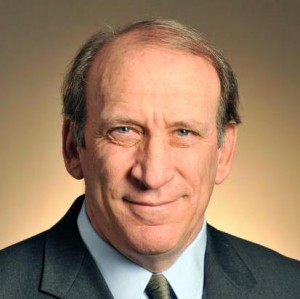
Dr. Mohit Kaushal
By Dr. Mohit Kaushal and Blair Levin
In the 1920’s, the government dedicated wireless spectrum to enable broadcasting for a new medium: radio. In the ‘40’s it did so with television, in the ‘60’s with satellites and in the ‘80’s, it enabled a one-to-one form of communication by dedicating spectrum to cellular phones. Now the government is dedicating spectrum for a revolutionary newcomer to the broadcasting arena—your body. The implications for health care are profound and positive.
A new FCC policy will allow more intensive use of a spectrum band for Medical Body Area Network (MBAN) devices. MBAN devices are miniature sensors that collect biometric readings—everything from heart rate to blood pressure to respiratory rate—and then transmit that data. MBAN is just taking off, but the case for using these devices is already compelling. Imagine a hospitalized patient currently tied down to her bed by a myriad of cables and monitors suddenly able to move around as wireless sensors replace the cables. Or imagine her at home wearing an unobtrusive sensor the size of a bandage that monitors her cardiac health 24/7 and issues a warning when her congestive heart failure acts up and she needs to head to the hospital. When she enters the hospital, the building automatically pings her sensor on the MBAN frequency and uploads her data directly to her records for her physician’s review.

Blair Levin
Bodycasting not only improves patient comfort and care, it opens the door to huge cost-savings. Remote patient monitoring for congestive heart failure alone could save $10 billion in healthcare costs by preventing expensive trips to the emergency department and subsequent hospitalizations. Instead of an expensive and painful ambulance trip to the ER, a patient could speak with a nurse over the phone about changing her medication. With healthcare spending topping 18% of GDP, we urgently need to embrace new technologies that could cut costs.
The MBAN concept is critical to advancing what organizations like the West Wireless Health Institute call Infrastructure IndependentSM healthcare. The basic idea is that shifting from “infrastructure-heavy” care inside a hospital—which relies on large, fixed equipment--to “infrastructure-light” care at home or elsewhere enabled by sensors and remote monitoring improves the quality of care, patient comfort and lowers cost. Overtime, this trifecta of benefits lays a new foundation for a health care sector that can better serve our country’s needs.
This is not the first time that the FCC has addressed healthcare needs. It has funded broadband infrastructure for rural health facilities for over a decade, and the agency’s 2010 National Broadband Plan outlined a path for meeting a host of communications technology challenges in healthcare and identified policies for empowering the sector to unlock technology-enabled innovation, such as MBAN.
Now that the FCC has laid the groundwork for MBAN development, others must act to make it a reality. The medical device industry appears eager; representatives from GE and Philips were on hand when the FCC announced the spectrum allocation. These companies, with a host of others, will create, test and deploy the devices and technologies. Care providers must embrace these new technologies, and healthcare payors (including Medicare/Medicaid) must assure that reimbursement rules provide the right incentives to use MBAN-enabled technology.
Nor is the work in communications related health-care complete. A new generation of health related devices, such as genetic sequencing machines, utilize bandwidth capacity far beyond those available to most health care facilities; to take advantage of such technologies, government policies must enable the necessary investment.
As with any big challenge, fixing our healthcare system will take a massive, coordinated effort reaching across industries, sections of society and—perhaps most difficult—across government agencies. In being the first country to allocate spectrum specifically for MBAN devices, America once again, as it did with previous spectrum allocations, has a chance to create a new industry and lead the world in using communications networks to address the healthcare challenge.
Dr. Mohit Kaushal is the Chief Strategy Officer of the West Wireless Health Institute, an independent non-profit research institute focused on using technology to lower the cost of health care. Blair Levin is a Fellow at the Aspen Institute Communications and Society Program, a nonpartisan educational and policy studies institute. They previously worked together at the FCC on the National Broadband Plan, where Kaushal was Director of the Connected Health team. Blair was Chief of Staff to FCC Chairman Reed Hundt from 1993 to 1997.















